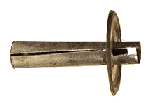

HOME | home
Iron on the Hearth | Iron, Cast and Forged | Cast Iron Cooking 4 | Copperware | Copper and Brassware 2 | Brass Alcohol Stove | Pipe Smoking | Tobacco the Indian Weed | Women's Pipes | Clay Pipe Collection | Pipes2 | pipes3 | Pipes4 | Pipe Tampers | Early Lighting 1 | Early Lighting 2 | Early Lighting 3 | Early Lighting 4 | Early Lighting 5 | Early Lighting 6 | My Lamps | Center Draft Lamps | Center Draft Lamps II | Center Drafts III | Miners lamps | Matches and Match Safes
Early Lighting 6
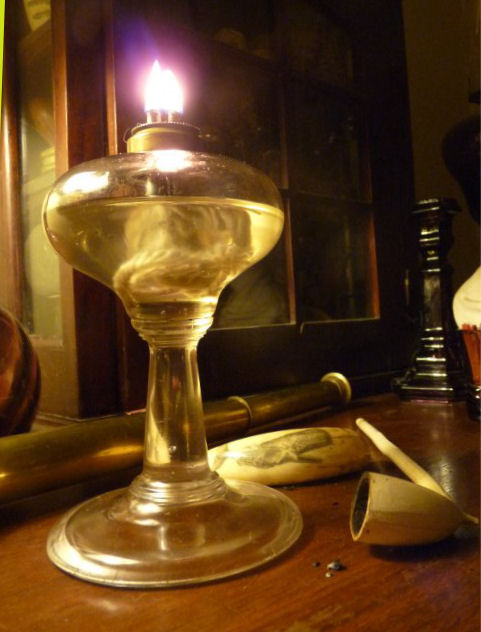

The King of Lamp Fuels was Whale Oil
Whale oil was the fuel of choice of the wealthy. It burned bright and did not create a great deal of odor. The lamps it was burned in were often very beautiful and very expensive because they were made for people who could well afford such luxuries. They were made of pewter, silver, bronze and glass as well as other materials. The most famous oil lamps we know today were made of beautiful flint glass or Sandwich glass. The era of whale oil as lamp fuel ended about the time of the civil war and the beginning of the Industrial Revolution.




Sandwich Glass Whale Oil Lamps
Harvesting whales and processing the oil was a very costly and dangerous endeavor. Whale oil for lamps was the oil obtained from the blubber and head of various species of whales, particularly the three species of Right Whale (Eubalaena japonica, E. glacialis, and E. australis) and the Bowhead Whale (Balaena mysicetus). It was also taken from several species of baleen whale. The most important whale oil was sperm or spermaceti oil, processed from the heads of Sperm Whales as seen in the illustration below. For centuries whalers were familiar with oil from the head and jaw of toothed whales such as the Sperm Whale. This amazing oil never seemed to congeal even in the bitter cold of the Arctic. This unique oil was found in its purest form in an organ called a "mellon," which is part of the special navigational system used by these colossal giants. The feeding habits of the different species differs. Sperm whales grasp their prey in their massive teeth and have even been known to eat giant squid. Baleen whales on the other hand have a unique straining system that allows them to sift out food as tiny as krill from the salt water. By taking in the prey from schools of sea animals in massive amounts of sea water and then expelling the water through slats of sorts called baleen, they can remove the water leaving the protein rich food to be digested.
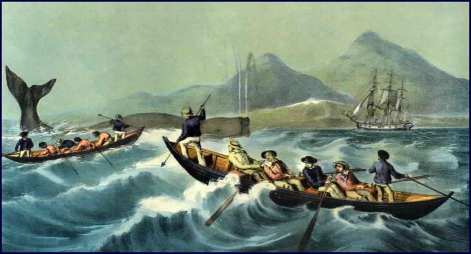
Whale oil is actually a liquid wax and not a true oil at all. It flows readily, is transparent and ranges in color from a bright honey yellow to a dark brown. The color depended on the condition of the blubber from which it had been extracted. Stearin to make candles and spermaceti could be separated from whale oil at low temperatures. At under 0°C these components could be almost completely crystallized & filtered out. When removed and pressed, this compound is known as whale tallow. The oil from which it is removed is known as pressed whale oil. However it was sometimes passed off as sperm oil. The number one use of whale oil was as fuel for lamps and as candle wax. It was the first oil of any kind to be commercially viable because it could be obtained in mass quantity and was in highest demand do to its unique qualities. No household could produce this fuel from its livestock. That is what made whale oil become an enormous world wide industry. Before whale oil, most households refined sheep or beef tallow for lamp fuel with some fish oil being used but fish oil was smelly and dirty to burn although sometimes it was burned in lamps.
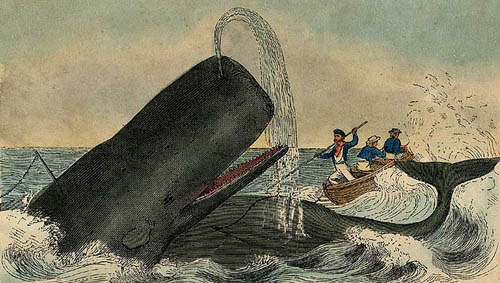
The method of hunting used by the American, British and Dutch whaling fleets was to pursue a whale once sighted and then have the ship launch small boats rowed by teams of men to do the harpooning. Obviously it was a very dangerous task for those in the small boat. A harpoon attached to a heavy rope would be thrust deep into a whale. When the whale was killed it would be towed to the ship and tied alongside. A ugly and dirty process, called "cutting in," would then begin. The whale’s skin and blubber would be peeled off in long strips at this time and boiled down to make whale oil on board the sailing ship. These ships basically had to process the whale while still at sea, no easy feat on a wooden ship. The faster it was rendered the higher the quality of the oil obtained.
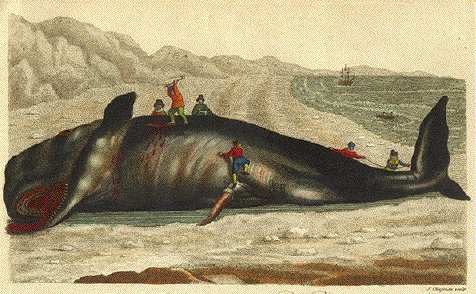
In the 1700s, American colonists began developing their own whale fishery. Islanders from Nantucket, who had taken to whaling because their soil was too poor for farming, killed their first sperm whale in 1712. By the early 1800s, whaling ships from New England were setting out frequently on very long voyages as far away as the Pacific Ocean in search of sperm whales. Some of these voyages could last for years and be very difficult on those involved in the pursuit of whales. Many sailors died during these long journeys.
Many seaports in New England were part of the whaling industry. New Bedford, Massachusetts however was the town that became known as the world’s center of whaling. Of the more than 700 whaling ships sailing in the 1840s more than 400 called New Bedford their home port! Many Wealthy whaling captains built large houses in the best neighborhoods of New Bedford. The town was known as "The City that Lit the World." These whalemen were the first oil barons of the New World.
Whale Oil Lamps
 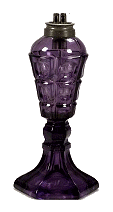 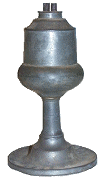 Whale oil was very costly, it went for around $2.00 a gallon which translates to about $200 a gallon in today's currency. Not many families could afford it for every day use. The average household used lard, oil or some other rendered fat, or still relied on candles and the fireplace for light. Their day usually went from sun up to sun down because to work during daylight hours would be most cost effective. Whale oil lamps can be identified when the burner is still intact by looking at the mechanics of the burner. The wick holders are one or two short tubes that are generally about a quarter inch in diameter.
 Double Tube Pewter Burner
Whale oil thickens when cool so the flame was, by necessity, close to the font so the heat would transfer down the metal wick tubes to warm the whale oil. It is often said that kerosene replaced whale oil because whale oil was becoming scarce. This was not the case. Whales did not become that scarce until factory whaling years latter. The problem was that whale oil was so expensive it had to be used sparingly and for the average household was an extravagance. kerosene quickly replaced whale oil because it was affordable and available to every citizen. Long after whale oil was no longer used for lamp light it remained valuable as a lubricant and a medicinal oil.
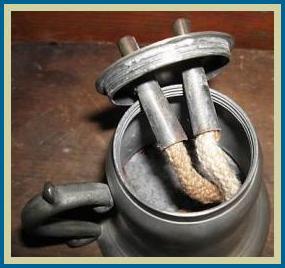 Pewter Whale Oil Lamp with burner unscrewed
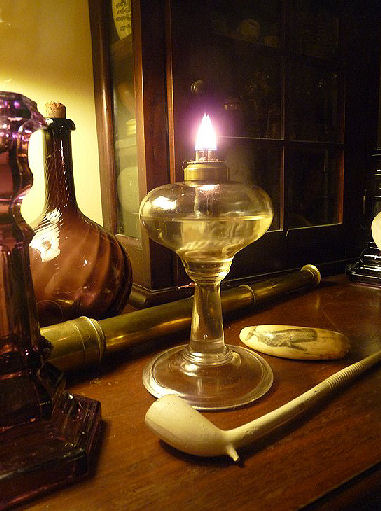 Whale Oil Lamp lighted
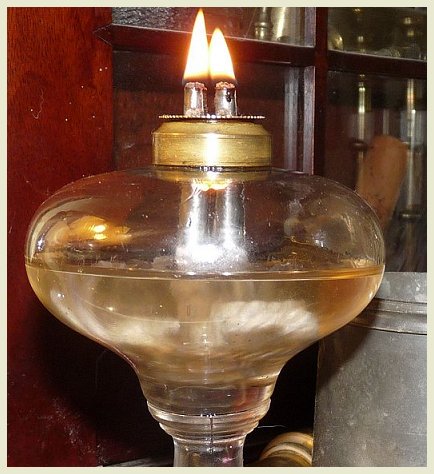 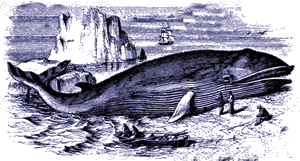 Links
More on Whale Oil Lamps!
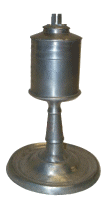 International Association of Collectors & Students of Historic Lighting
The Whaleman's Lament
 Twas on the briny ocean on a whale ship I did go.
I often thought of distand friends, I often thought of home.
Through dreary storms and tempests and through some heavy gales,
Around Cape Horn we sped our way, to look out for sperm whales.
They'll rob you and they'll use you; its worse than any slaves.
Before you go a-whaling, boys, you'd best be in your graves.
It's: “Do it now or, damn your eyes, I'll flog you till you're blue.”
Oh boys, I couldn't tell it all, but every word is true.
The wind do blow and the great seas grow and we strain upon the oars,
And your heart would bleed at the sperm whale's speed and it's: “Pull, you sons of whores!”
The weary chase is over and the stars begin to glow,
And it's: “Light the flares, you lubberly lot, there's tryin' out to do!”
I swore I'd not go back again once we was homeward bound,
For the pleasures are but few, my boys, on them bitter whaling grounds.
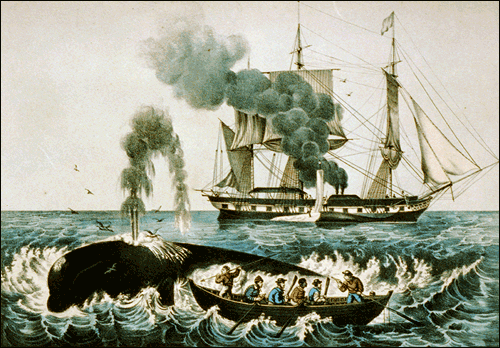 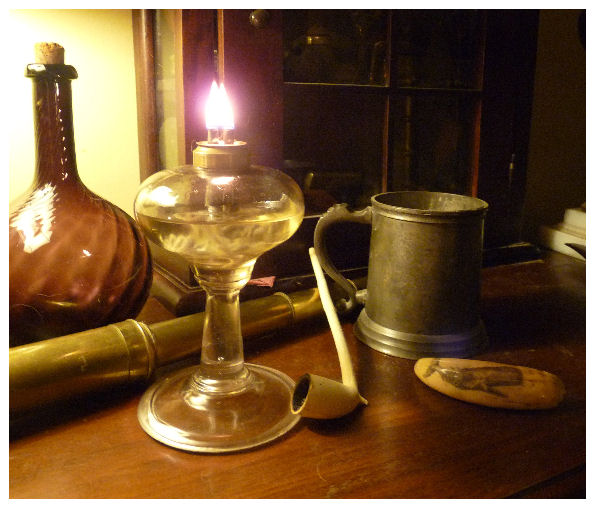 |

Copyright 2008 , Jim & Beth Boyle, All Rights Reserved
No part of this website may be used for any purpose ( including using images )
without written consent from The Rams Horn
